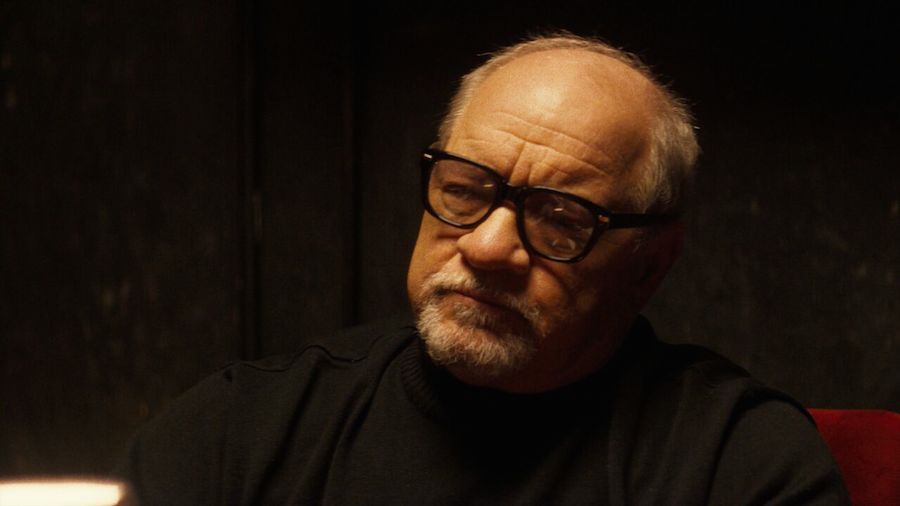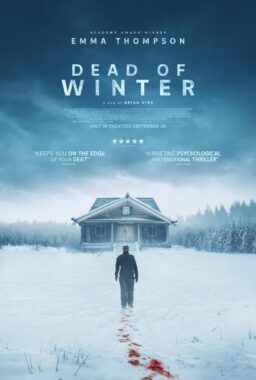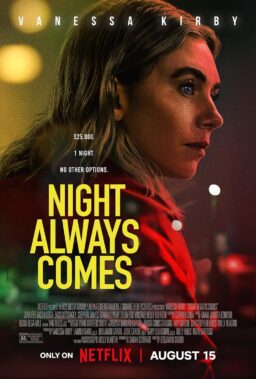“At first, I thought Roger Ebert’s website was a bad idea,” Paul Schrader told me during our conversation at this year’s Toronto International Film Festival. “I thought that film critics should not be fashion designers and have their name on things after they are dead. When you’re dead, that’s the end of that period. But Roger understood the need for having some kind of branding. When he first did it, I thought he was wrong, and then later, I came to realize that he was very smart about it.”
This sort of candidness is often rare to find during an interview, and it is what made chatting with Schrader such a supreme pleasure. As the director of such diverse titles as “Blue Collar,” “American Gigolo,” “Mishima: A Life in Four Chapters” and “Auto Focus”—not to mention the screenwriter of Martin Scorsese’s “Taxi Driver,” “Raging Bull,” “The Last Temptation of Christ” and “Bringing Out the Dead”—Schrader’s legacy is a formidable one, to say the least. His latest directorial effort, “Dog Eat Dog,” is a crime drama with a jet black streak of humor. Based on the novel by Edward Bunker, the film follows a trio of ex-cons—Troy (Nicolas Cage), Mad Dog (Willem Dafoe) and Diesel (Christopher Matthew Cook)—as they bungle their way through a scheme to kidnap the baby of a rival mobster in Cleveland.
Schrader spoke with RogerEbert.com about his attempt at “being bold,” his growing interest in slow cinema and his first (and, according to him, only) time in front of the camera.
There are few opening sequences this year that grab your attention quite like the one you’ve staged in “Dog Eat Dog.” I loved how you fractured the image with multiple screens that Dafoe appears to be watching through the eye tattooed under his chin.
When I first read that scene, I knew that I wanted to make the film. No matter whatever else happened in this movie—I figured that I could rewrite everything—the opening scene was great, and it required us to be very, very bold. You had to fire a cannon shot across the bow and let the audience know that what they’re about to watch is going to be unexpected. The idea was to jump ahead of the audience in the opening scene and then just run and never let them catch up with you, never let them see where you’re going. I think the movie succeeds in that way because you really don’t know where it’s headed. Just when you think one thing will happen, the opposite occurs, and suddenly some guy’s head gets blown off. If you are taking this movie seriously, you’re in the wrong theater. I was working with a new cadre of people that I had put together, and we were always coming up with techniques that referenced other films. The multi-screen thing came out of “Requiem for a Dream,” because I was looking at that film for ideas on how to shoot drug scenes.
The scene is perfectly punctuated with a gag that plays on an answering machine.
As a matter of fact, the film’s screenwriter, Matthew Wilder, is that smarmy guy on the other end of the phone.
How did you and Wilder go about collaborating on this project?
I had to do a rewrite, primarily for financial reasons. The script was just 15 pages too long, and when you’re working on a tight budget, you cannot afford to shoot material that you are going to cut out. Mad Dog dies at the end of the second act, and as soon as he’s gone, the air goes out of the balloon. I knew that once he died, we had to get the show over with. Wilder came to Cleveland when we were doing rehearsals. I’ve only had two other situations where I’ve asked the writer to come to rehearsal—one was Harold Pinter and the other was Bret Easton Ellis. I thought it would be helpful for Matt to be there because he has a very dark sense of comedy.
Edward Bunker is best known to my generation for “Reservoir Dogs,” another film about gangsters who find themselves in over their heads. “Dog Eat Dog” has the feel of a crime drama with a dash of the Three Stooges.
Bunker’s sensibilities really come from the ’70s, and “Straight Time” is fairly representational of them. This movie is set in the ’90s, and now I’m in the 2010’s trying to figure out how to do this. It’s not that faithful an adaptation, and is as much about crime films as it is about crime. Bunker’s book wasn’t much of a comedy and neither was the script, but the deeper I got into it, I thought, “This s—t is funny.” I always thought “Auto Focus” was a comedy, but I learned from “Auto Focus” that you really have to hammer the audience hard. You have to let them know early on that they can laugh, so I did that on this one. I found while screening “Dog Eat Dog” that if an audience laughs in the opening scene, they’ll keep laughing, and if they don’t, they’ll never start. The funniest line came from Willem in rehearsals. We’re blocking a scene involving the baby, and Nic goes, “What can we put in the baby’s mouth?” Willem replies, “A dick?” He then broke character and said, “Aw, you can never say that.” We all looked at each other and went, “Why can’t you?” [laughs]

Dafoe has always felt like a natural part of your cinematic world.
Willem is a friend, which is sort of unusual because filmmakers and actors are generally not friends. The care and maintenance issue is just too much—you deal with it while you’re making a film but you don’t have to deal with it elsewhere. [laughs] But Willem’s a friend, and I’ve always liked him more on the quiet side and have cast him in roles that are on the quiet side, like in “Light Sleeper.” When I gave the script to Nic, I wanted him for Mad Dog, the best role. He read it and said, “I want to do the film, but I want to play the straight man.” So now I had this really hyper role to cast, and I thought it would be kind of cool to work the other way with Willem by having him go big, and let Nic go underneath. That’s the way it worked out.
On the first day of shooting, we were at the strip club and Nic walks off the film. He had been out there for rehearsals, and it had come to the end of his paycheck. I told him, “If your check doesn’t hit by Sunday, I don’t think you should work.” I show up for work Monday morning and go, “Where’s Nic?” He was on the plane back home. The check didn’t drop, so the producers scrambled to get him paid, and he eventually returned the next day. But in the meantime, we had a dead day—the only thing we could shoot without Nic was Willem’s monologue that goes from the strip club to the car and into the building. I said to Willem, “This is your character’s climactic scene. Would you mind doing it first thing on the first day?” And he said, “Yeah, why not?”
It almost feels as if he’s talking himself back into the wall.
Finally, Diesel’s just had it and goes, “Will you shut the f—k up?” [laughs]
Of the three leads, Diesel seems to have his head most securely fixed on his shoulders, at least most the time.
That actor was actually an ex-con who spent two years in prison in Texas. Nic and Willem were, in fact, older than their characters, and I needed to cast somebody younger as Diesel so it didn’t look like the film was about three grandpas. I also needed somebody who would do the role for scale and be there the whole time. The good thing about working with Cage is he gets your film financed. The bad thing is that he eats up most of your budget.
I was pleasantly surprised to see you turn up in the film as Grecco The Greek. There was a weary, Charles Durning-esque quality to your performance.
Well, I didn’t want to do it. I had asked Tarantino, I had asked Abel Ferrara…Marty was going to do it and then it turned out to be on his birthday. I also asked Walken, Nolte and Goldblum, but they were all busy. I even went to Rupert Everett, and he was going to do it as a transexual gangster, but as the shooting day came closer, Nic kept saying to me, “You should do it.” I realized that we were so tight on money that even if Marty could come to Cleveland, we couldn’t buy him an air ticket, so I did it—$900 for three scenes. Plus I was sick with laryngitis. The reason why I was never in one of my films before is I had always assumed that I would dislike my image and I would cut myself out. In every film, people would try to get me in front of the camera, but I never did it. Marty did that cameo in “Taxi Driver” because the original actor, George Memmoli, got sick, and I begged Marty not to do it. I was afraid that he would see himself onscreen and cut the scene, and I liked the scene. Of course, the opposite happened. He saw himself onscreen, he loved it and then made the scene longer. [laughs]
Last time I remember seeing Cage and Dafoe together was in “Wild at Heart,” where Cage does his memorable Elvis impression. In “Dog Eat Dog,” he does an equally impressive Bogart impression.
Nic had it in mind for his character, and we started fooling around with it, though I figured I’d cut it out. It’s easier to cut it out than to say it’s not a good idea. When we got to filming the final shoot-out, Nic says, “I’m not sure how to play this. How did Troy ever get away? It’s not very credible,” and I said, “Well, maybe he didn’t get away, maybe he’s dead.” When Nic read through the scene with the other actors, he started talking like Bogart. I said, “Nic, we don’t want to shoot this twice,” and he said, “Well, I still don’t know how to play this scene, so I figured that if he’s going to die, he might as well go out as Humphrey Bogart because he always wanted to be Humphrey Bogart.” I said, “Nic, how will we make that work?” and he said, “You told me that we were going to be bold, and this is bold.” That made me agree to do it.

This idea of artistic transcendence—where art and life fuses together—is a central theme of your great 1985 film, “Mishima,” which I saw earlier this year at the University of Chicago with Philip Glass in attendance. How did you approach working with Glass, whose repeated motifs are integral to the rhythmic flow of the film?
I knew that I was creating this sort of puzzle box of themes and styles, and that all these little pieces needed a unifying element. My producer, Tom Luddy, had been involved in “Koyaanisqatsi,” so he knew Philip. I saw that Philip had done three biographical operas—on Gandhi, Einstein and photographer Eadweard Muybridge—so I said, let’s think about this film as an opera. I told Philip, “I’m going to make the boats, and you’re going to make the stream.” That was our philosophy. So he studied Mishima, read his books and then composed an operatic suite about a half hour in length without seeing any footage. He did that electronically. I used the music to cut the film, but I completely tore it apart—repeated sections, added things, moved things around. Then I said to Philip, “I’ve scored the picture to your music, but I’ve totally destroyed its integrity. However, it does hit all the cues and cut marks.” He looked at it, re-scored it and the final draft of the music was performed by an orchestra.
His music accompanying the sunrise that bookends the film is especially striking.
That image comes from the end of Runaway Horses, where Mishima writes, “The bright disk of the sun soared up and exploded behind his eyelids.” The sun is represented in the Japanese flag, and for people in Japan, the sun is also a deity, so it is a religious affirmation.
I’ve loved how your work has explored spiritual crises from a variety of different angles, and I wonder if spirituality is something you continue to wrestle with in your own life.
It’s funny that you should mention this. I wrote a book, Transcendental Style in Film: Ozu, Bresson, Dreyer, about 45 years ago, and that book has stayed current. Now the book is going to be reissued with a long article called, “Rethinking Transcendental Style.” It’s a study of slow cinema post-Tarkovsky. We’re going to have a conference entitled “Spirituality in Cinema” here at the Lightbox next April, and I’m going to present the article as my keynote speech. I wrote about spirituality in film in that book of theological aesthetics, but my career went in a different direction. I never thought I would make a spiritual film or a quiet film. I was too much enamored with psychological realism and action, both of which are anathema to a quiet film.
Then a few years ago, I had dinner with Pawel Pawlikowski. I was a big fan of his film, “Ida,” and he told me that if I kept a project at two million dollars, I’d be able to make the exact film I wanted. As I walked back to my place in New York, I realized that since the budgets of films have come down, I could actually make the spiritual film that I had always been afraid to make because I couldn’t get it financed. So I started writing the script, “First Reformed,” about an ex-military chaplain. I sent it to Ethan Hawke, he responded right away, and we’re going to start shooting in January. It’s a little bit “Winter Light,” a little bit “Diary of a Country Priest,” a little bit “Ordet,” a little bit “Ida,” and a little bit me. It’s also a 180 degree shift from “Dog Eat Dog,” which is, in many ways, a parody of all that, particularly when Willem is talking about his belief in redemption. [laughs]
You were a fan of one of my favorite recent German films, Dietrich Brüggemann’s “Stations of the Cross,” which was a perfect antidote to America’s recent slate of evangelical films.
Evangelical films are an entirely different cat. I just saw the trailer for a Christian sing-along film about an Australian group called Hillsong. You can tell that there is money to be made in those fields. Of course, the standard line in response to the evangelical agenda is, “You’re entitled to your beliefs but not your facts.” Slow cinema isn’t really religious, it is more meditative and contemplative. I don’t know exactly how slow my film is going to be. There’s a whole buffet of slow techniques, and different directors select different items from the buffet. A Béla Tarr film is not the same as a Dietrich Brüggemann film. I’m now trying to figure out where my appreciation of slow cinema and my gut talent meet, so it can be my film, not just an imitation of somebody else’s film. There was a quote in my book from a Dutch theologian who said that art and religion are parallel lines which meet in infinity and resolve in God.
I remember you also championing the work of Lena Dunham in an interview on the Criterion edition of “Tiny Furniture.” What are your thoughts on the current crop of emerging filmmakers?
There are so many talented filmmakers right now. The only difference between my generation and the current generation is not the talent—it’s the role of films in society. When I was breaking in during the ’60s and the ’70s, people actually looked to films to learn about social issues—women’s lib, civil rights, the war, whatever. When film is in the center of a social conversation, filmmakers will rise to it. Right now, there is no center to the conversation. There are probably more talented filmmakers now because there is a larger pool of them than there were 40 years ago, but film doesn’t have that importance anymore. The moment society looks to art, art responds. When fascism goes down in Spain or goes down in Chile or Italy or Czechoslovakia, the first people to respond are the artists because everyone is looking at them. I got into the film racket because I thought it was functional. You could solve real-life problems with metaphorical stories. Art is a tool like a hammer or a plier. You can actually use it.
“Dog Eat Dog” will be in theaters in LA and NY on November 4th, with a theatrical expansion, VOD and Digital HD on November 11th.












